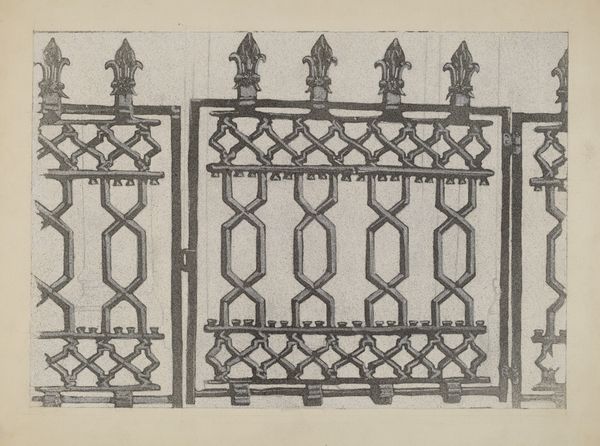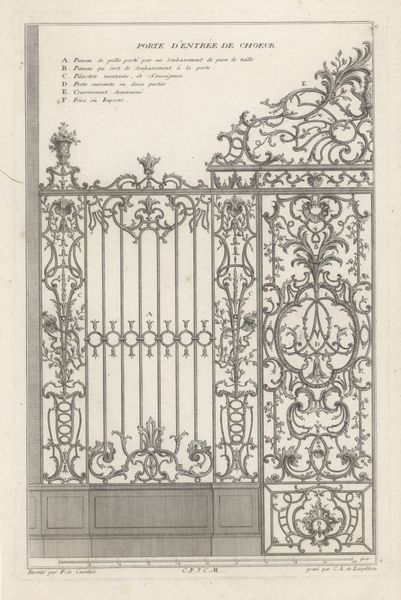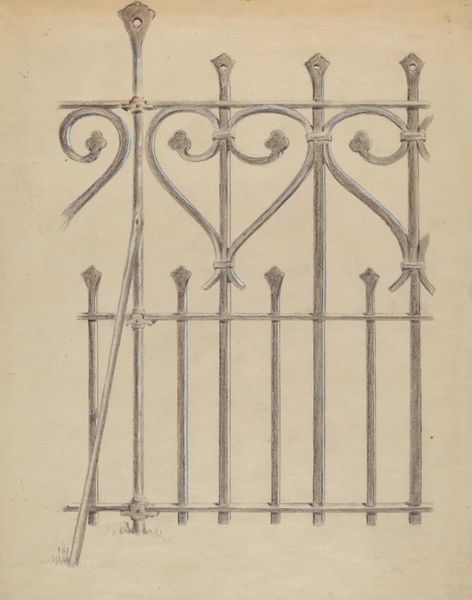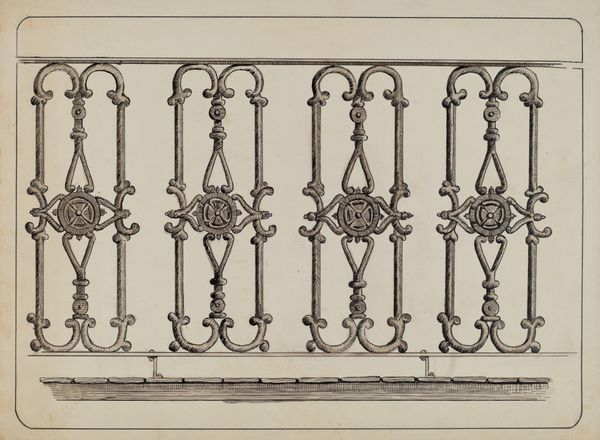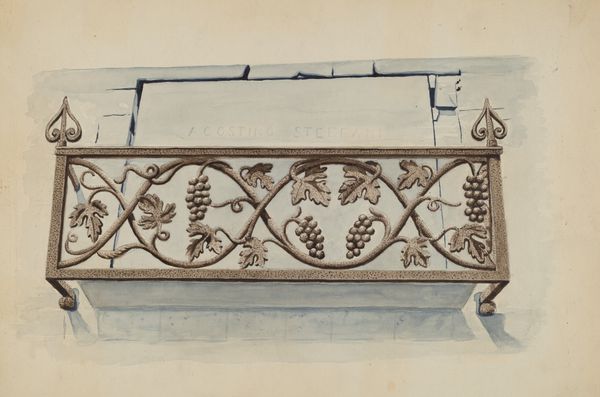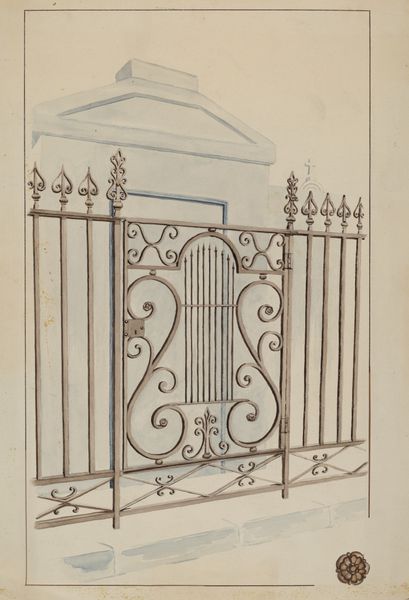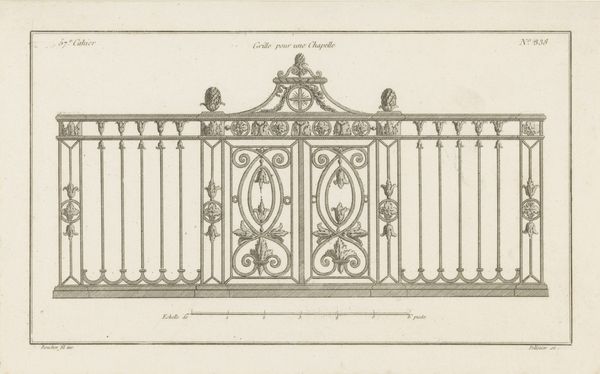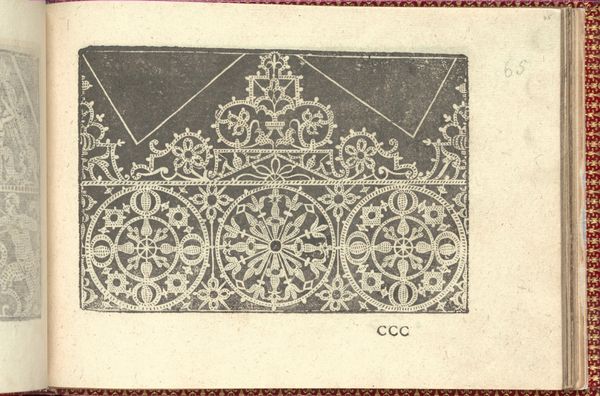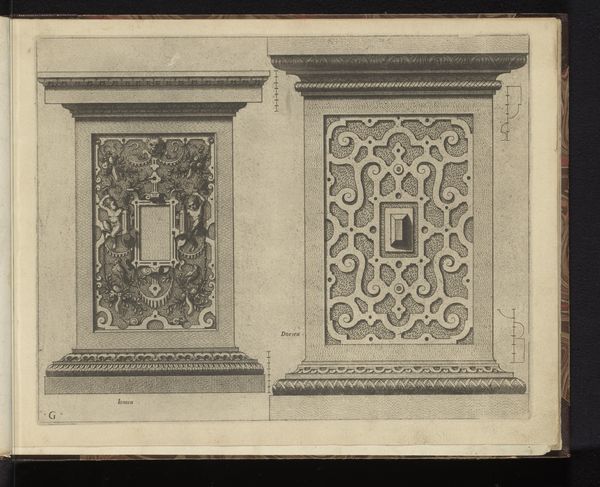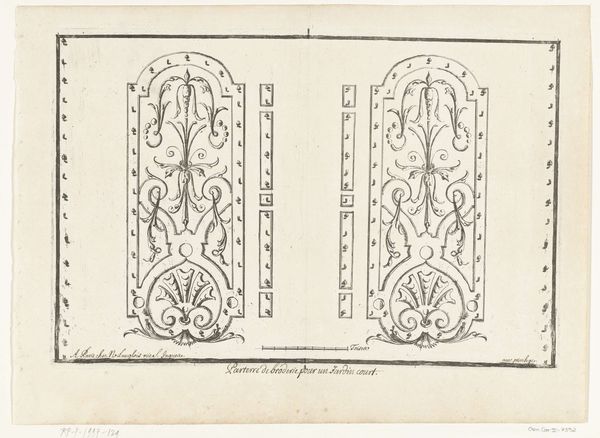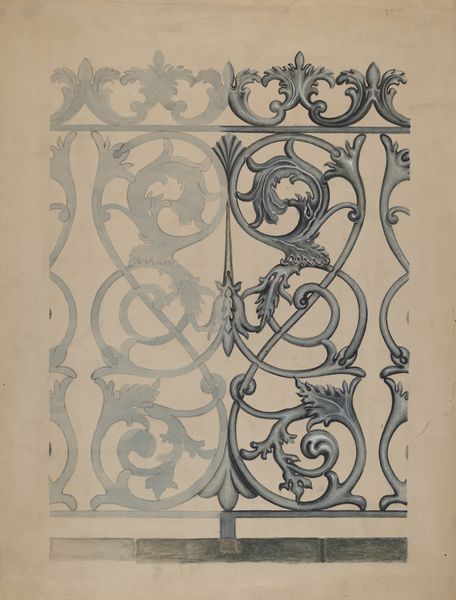
drawing, paper, pencil, architecture
#
drawing
#
paper
#
geometric
#
pencil
#
line
#
architecture
#
realism
Dimensions: overall: 30.5 x 46.5 cm (12 x 18 5/16 in.)
Copyright: National Gallery of Art: CC0 1.0
Editor: Here we have Ralph Atkinson's "Iron Gate," drawn in 1938 using pencil on paper. It looks so detailed, almost like an architectural blueprint, but it also has this undeniable artistic flair. How should we be looking at this drawing? Curator: Given its precise rendering and the artist's attention to detail, it is interesting to consider this drawing less as a pure aesthetic creation and more as a record of skilled labor. Pencil on paper; those were the industrial means available at the time, reflecting a certain class that benefited from access to paper, drawing skills, and leisure time. I wonder who commissioned the work. The level of realism suggests something beyond simple artistic expression. Editor: That’s a really interesting take. I was immediately caught up in the sort of visual rhythm of the design, all those circles and curls and geometric patterns. But if we focus on the ‘means of production,’ so to speak, do you think it shifts our understanding of the final artwork? Curator: Absolutely. Think about the ironworker, for example, who shaped that gate in reality. This drawing becomes a mediator of sorts, between the artisan's physical toil and a patron's desire. What does it mean to translate manual labor into this kind of polished representation? Editor: So, it's not just a drawing *of* a gate, but a document that indirectly hints at all of these larger forces, like class and labor. It almost makes you think of what's *not* shown in the drawing. Curator: Precisely. It encourages us to question the narrative this "realism" presents and consider the socioeconomic context that makes its existence possible. It’s about understanding art’s function within material realities, far from a detached aesthetic realm. Editor: I'll never look at a simple drawing the same way again. Curator: Indeed. Recognizing art's deep roots in the everyday can profoundly alter our perception.
Comments
No comments
Be the first to comment and join the conversation on the ultimate creative platform.


